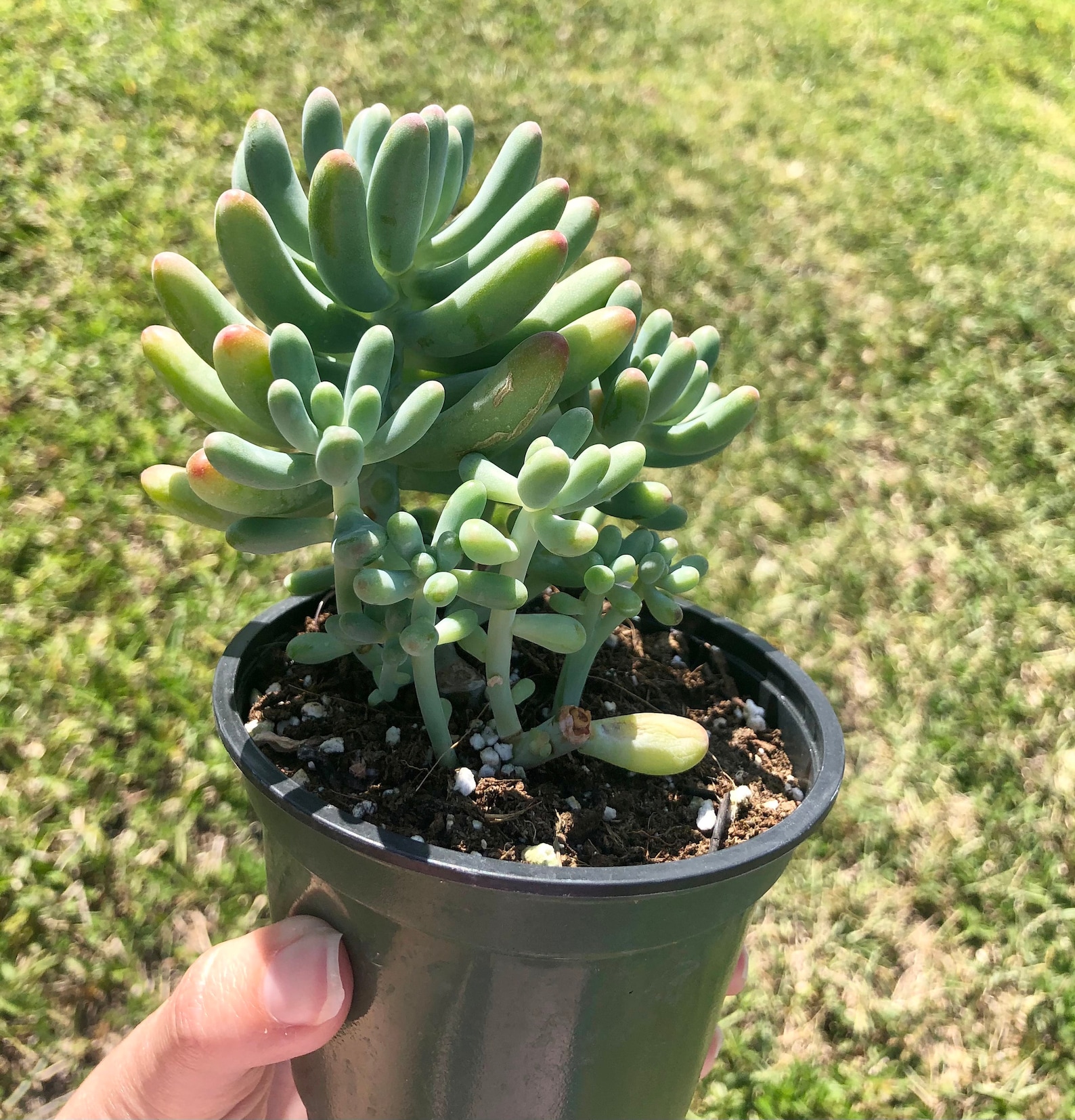
Jelly Bean Plant Sedum Pachyphyllum rare succulent Live Etsy
Sedum rubrotinctum or Sedum × rubrotinctum, commonly known as jelly-beans, jelly bean plant, or pork and beans, [citation needed] is a species of Sedum from the plant family Crassulaceae.It is a succulent plant originating in Mexico. The common English name refers to its short leaves that resemble jelly beans, especially when taking on a protective hue.

Jelly Bean Plant Bean plant, Plants, Succulents
The jelly bean succulent is a unique and beloved plant by many gardeners, with over 90% of people who own them being pleased with the outcome. This article intends to discuss common issues one may face while growing jelly bean succulents, so they can be pre-empted and prevented.

Known as jellybeans, jelly bean plant, or pork and beans.elated image
Jelly bean plants are quite adaptable when it comes to temperature and humidity. They prefer temperatures between 65°F and 80°F (18°C and 27°C) and can tolerate indoor humidity levels. However, be cautious of extreme temperature fluctuations or prolonged exposure to cold drafts, as these can cause stress to your plant..

Sedum rubrotinctum Jelly Bean Plant (Amy) Plants, Bean plant, Sedum
The Jelly Bean plant, also known as Sedum rubrotinctum, is a popular succulent that is loved for its vibrant, jelly bean-like foliage. This low-maintenance plant is native to Mexico and is commonly grown as a houseplant or in outdoor gardens. If you're thinking about adding a Jelly Bean plant to your collection, here are some essential care.

a small white flower sitting on top of a green leafy plant next to a window
The Jelly Bean plant, scientifically known as Sedum rubrotinctum, is a succulent that belongs to the Crassulaceae family. Its unique name comes from its small, jelly bean-shaped leaves that resemble colorful candies. These leaves are fleshy and plump, giving the plant a distinctive appearance.
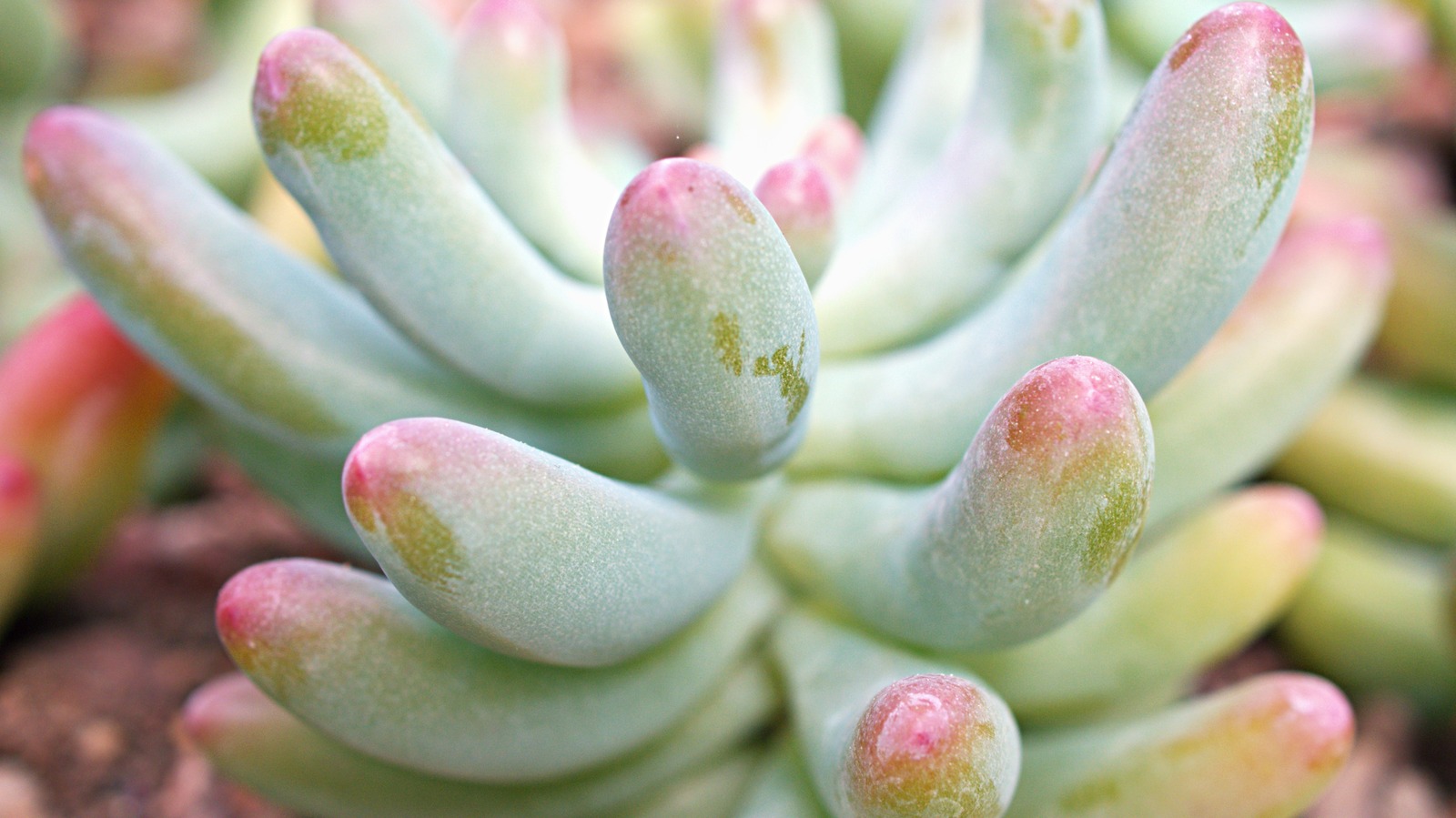
How To Care For A Jelly Bean Plant
Jelly Bean Plants have cylindrical jelly-bean shaped leaves that grow up to 2 cm long and can reach up to 7 to 8-inches tall with the tendency to lean on one side. During the early years of the Jelly Bean plant, it can produce some delicate star-shaped yellow flowers, which appear abundantly from Winter to Spring.

Sedum rubrotinctum 'Aurora' Pink Jelly Bean Mountain Crest Gardens
Allow the stem or leaf to dry for about a day, so it doesn't ooze sap. Poke a short stem or a leaf into lightly moist potting medium and S. rubrotinctum will readily grow roots in about 3-4 weeks. Keep the plant out of direct sun until it shows new growth. Grow Sedum rubrotinctum as a houseplant.
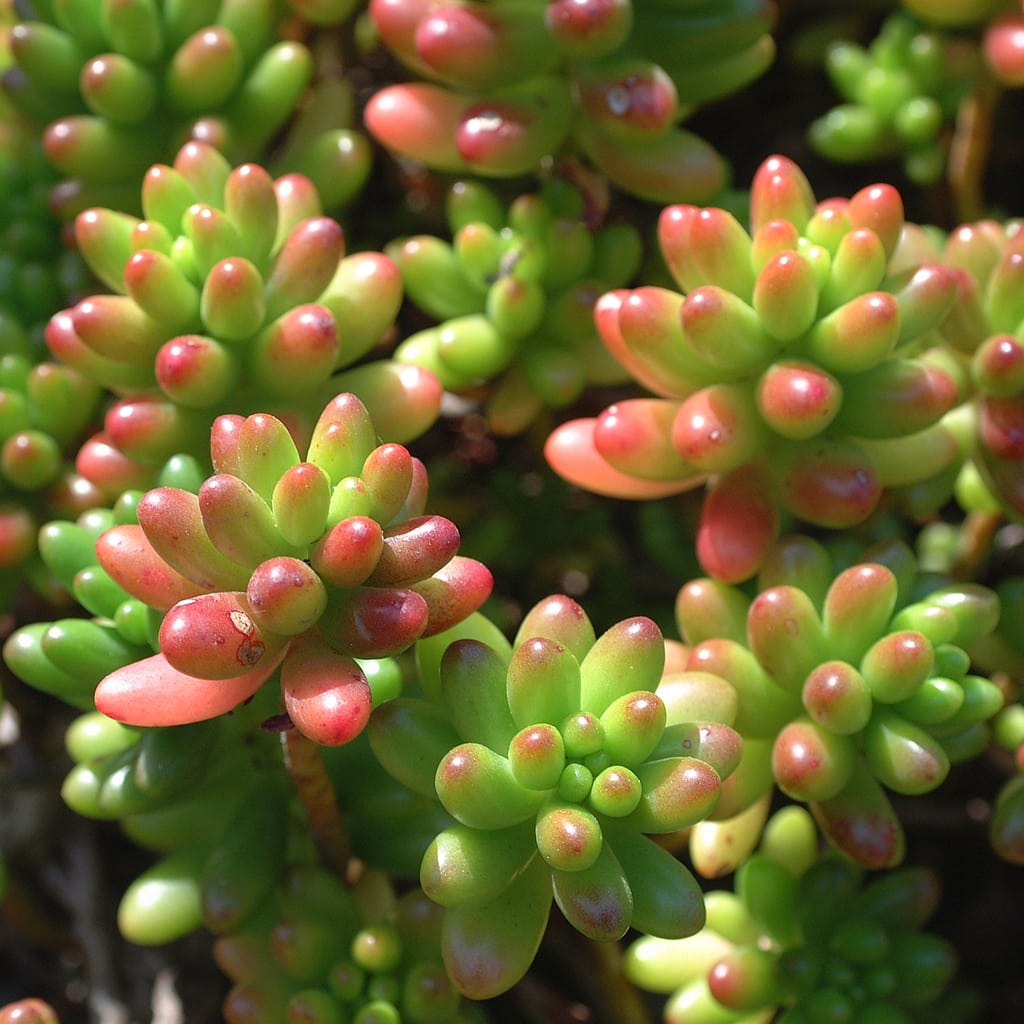
Jelly Bean Plant Facts Learn About Growing Jelly Bean Sedums
Jelly bean plants will do better in higher temps but aren't too fussy with humidity. Like other sedums, the jelly bean plant appreciates higher temperatures. They don't tolerate cold well and shouldn't be exposed to temperatures below 20°F (-7°C). Don't worry if you live in a cooler zone.

Sedum, Jelly Bean (Sedum rubrotinctum) Plant, Organic Strictly
Water. Use the 'soak and dry' method with your jelly bean succulent. Water your plant only when the soil is completely dry. This is where most succulent growers go wrong and accidentally kill their plants. In the jelly bean plant's natural habitat, it would be exposed to many weeks or even months of drought.

Jelly Bean Succulent Varieties
Light: Full sun. Water: Water the jelly bean plant more in the spring and summer, but still let it dry out in between waterings. Plant Sedum rubrotinctum in well-draining potting soil and never let it sit in water. Zone: Zones 9 to 10. Temperature: This succulent plant does best in hotter conditions.

Sedum Rubrotinctum (Jelly Bean Plant) How To Care For It Best
Propagate Jelly Bean Succulent Plant-Sedum Rubrotinctum from Leaves. From Leaves: Step 1. Use a fallen leaf or break off a leaf from the stem. The leaf needs to be whole from the tip to the end for propagation to work. Use plump, healthy looking leaves. You will have more success with healthy leaves.
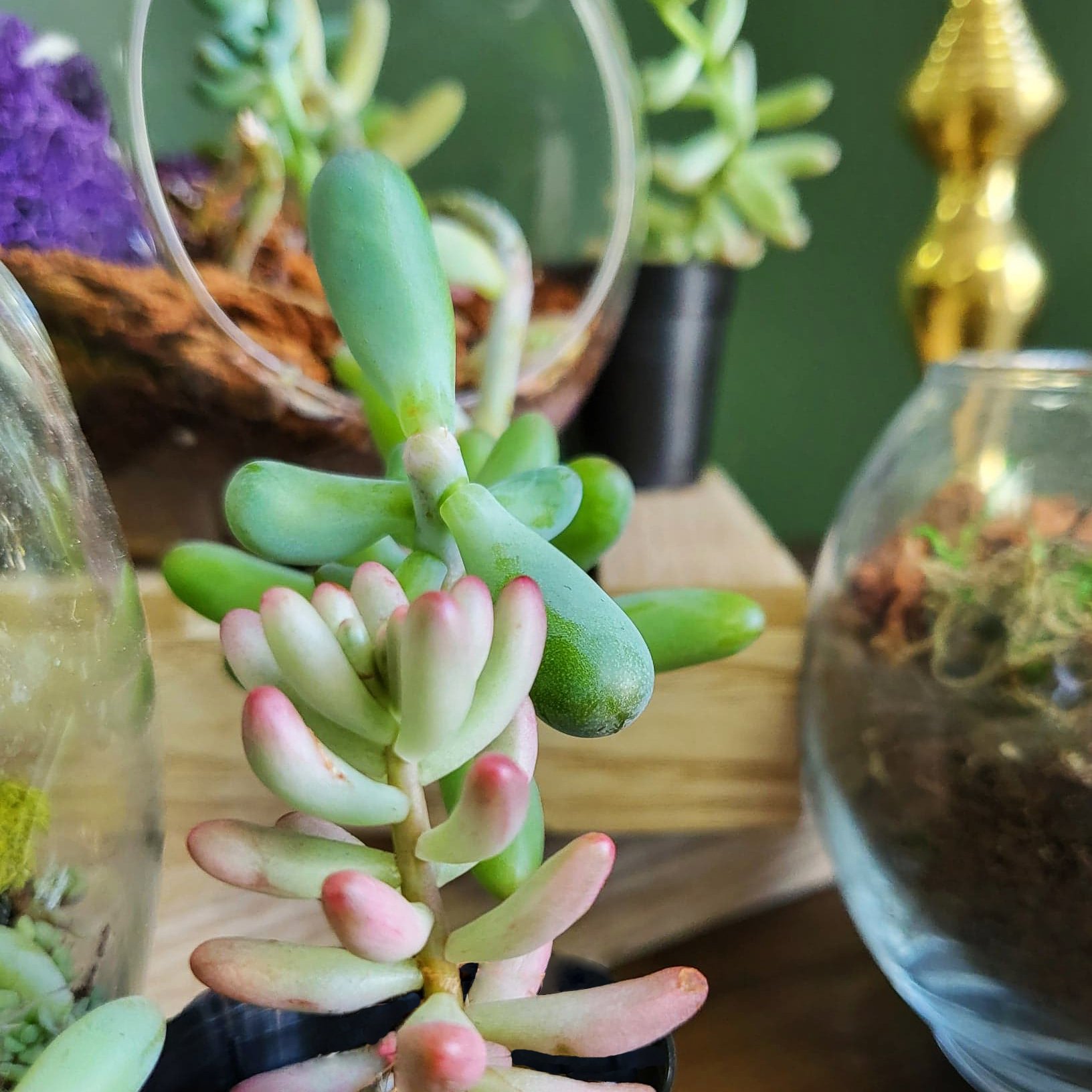
Plant of the Month August 2022 Jelly Bean Plant (Sedum rubrotinctum
About Jelly Bean Sedums. Jelly bean plant facts indicate this plant is a cross of Sedum pachyphyllum and Sedum stahlii, As such, it's another candidate for neglect and does best without too much attention.Six- to eight-inch (15-20 cm.) stems grow upward and lean when leaves weigh it down.
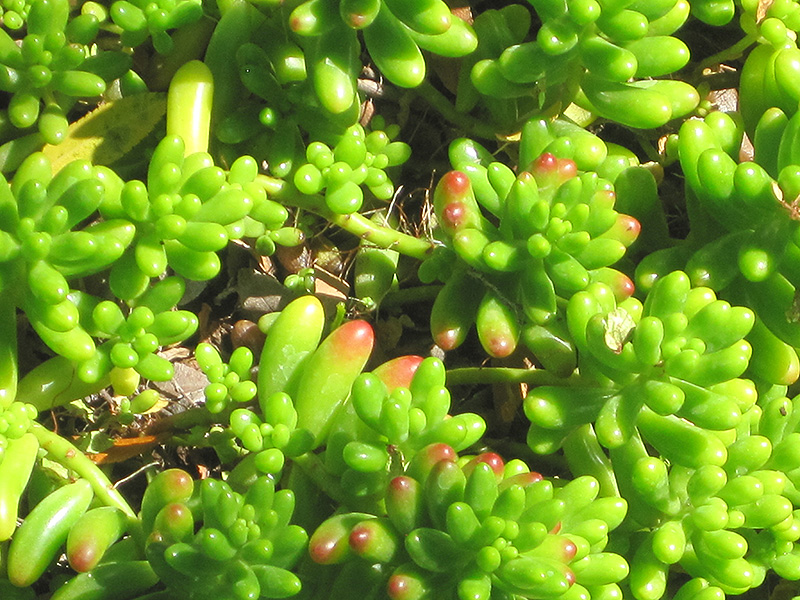
Jelly Bean Plant (Sedum rubrotinctum) in Naperville Aurora Batavia
The Jelly Bean plant is an ornamental plant that's a great choice for xeriscaping and dish gardens. It is lovely tumbling through a rock garden. It makes an excellent ground cover in hot, dry settings. Because of its tumbling, rambling growth habit, it can make a pretty hanging basket plant, decorative plant, or potted plant. It is also.

Sedum rubrotinctum 'Aurora' Pink Jelly Bean Mountain Crest Gardens
A: Jelly Bean Plants, like other succulents, don't need frequent watering. Use the "soak and dry" method: water the plant thoroughly, then allow the soil to completely dry out before watering again. In warmer months, this might mean watering once a week, but in cooler, less sunny periods, watering might drop to once every two weeks or less.
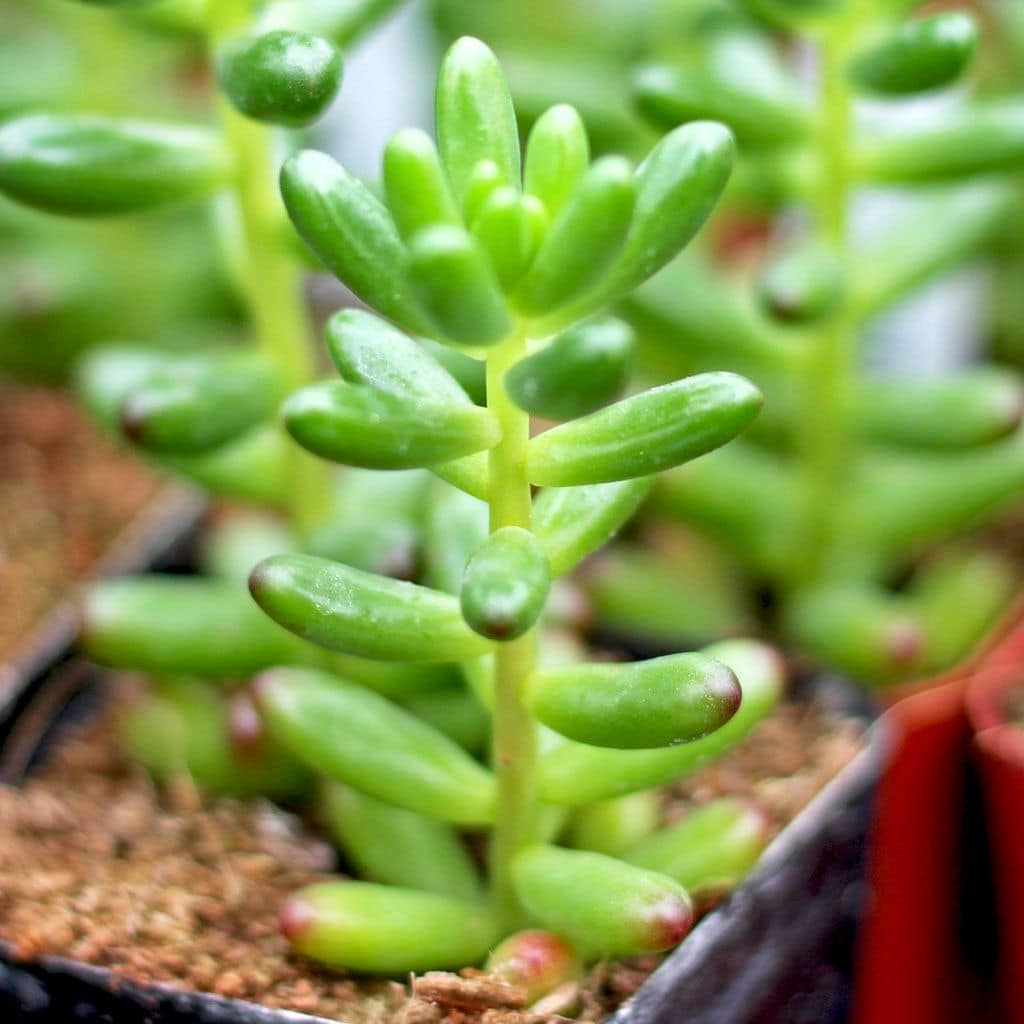
Sedum 'Jellybeans' Succulent 3" Pot Hello Hello Plants & Garden Supplies
Common Pests & Deiasis Of Jelly Bean Plant. Protecting your jelly bean plant from common pests and diseases is essential to ensure its health and longevity. While jelly bean plants are relatively low-maintenance, they can still be susceptible to specific issues. Common pests that may affect jellybean plants include aphids, mealybugs, and spider.

PlantFiles Pictures Sedum Species, Stonecrop, Many Fingers, Jelly
Jelly Bean Plants grow to 7-8 inches (20 cm) in height and tend to lean to one side. They have cylindrical jelly-bean shaped leaves that grow up to 0.7 inches (2 cm) long. The leaves of the Sedum Rubrotinctum grow in spirals around the sprawling succulent stems.
- Holanda Tiene Un Gran Yacimiento
- Ir A La Farmacia Más Cercana
- Muebles Sarria Dos Hermanas Catalogo
- Compromiso Y Vocacion De Servicio
- Rueda De Prensa Tailandia Daniel Sancho
- Calendarios Torneos Club De Golf La Cañada
- Stories Not To Be Told Showtimes Near Barcelona
- Extractor Mecánico De Reparacion Abolladuras Aire
- Donde Puedo Comprar Una Valvula De Alivio
- Los Animales Dela Granja Planeta Deagostini